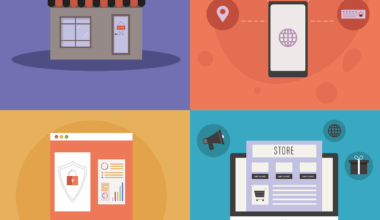How to Create Effective Bundles that Maximize Profit
Bundle pricing is a powerful strategy that allows businesses to offer multiple products or services together at a lower price than buying them separately. This pricing method can boost sales and enhance customer satisfaction. To create effective bundles, understanding your customers’ needs and preferences is crucial. Start by conducting market research to identify what products complement each other. You want to create offers that seem appealing while simultaneously providing value. Consider packaging items that make sense together. For instance, a camera might be bundled with a lens and a memory card. Pricing is also essential in bundling strategy. Ensure the combo price reflects a discount from purchasing items separately. If the customer perceives they are saving money, they’ll be more likely to purchase. Leverage psychological pricing as well. Ending prices in .99 can make them more appealing. Moreover, promotional activities like limited-time offers can create urgency, prompting customers to buy quickly. Monitor the performance of your bundles and adjust based on feedback to continually optimize your strategy for maximum profitability. This approach will help maintain customer loyalty while increasing sales.
Next, consider the customer experience in your bundling strategy. Ensuring an easy and pleasant shopping process can significantly influence purchasing decisions. Make the bundling process straightforward by clearly presenting the bundle details on your website and in marketing materials. Customers should understand what products are included and how much they will save. Strong visuals can enhance this understanding; use images of the bundled products to grab attention. Incorporate customer testimonials showcasing successful bundle experiences. For instance, display how a specific bundle improved user experience or efficiency. Utilizing bundles can also allow you to introduce new items to loyal customers who might be hesitant to try them otherwise. For example, if you have a well-established product, bundling it with a new one can give it additional visibility while still enticing customers. Additionally, personalized recommendations based on shopping behavior can enhance customer experience significantly. Offering bundles tailored to individual preferences will likely increase sales, making customers feel valued. Regularly review sales data to analyze which bundles perform best, allowing you to refine your offerings and improve customer satisfaction further.
Incorporating seasonal promotions into your bundle pricing strategy can take your sales to the next level. This tactic presents special offers that cater to holidays or events, enticing customers to make purchases at specific times. For instance, during back-to-school season, bundle relevant items such as notebooks, pens, and backpacks. Customers often look for comprehensive solutions during peak shopping times. This approach can simplify their decision-making process and maximize your sales volume. Similarly, during holidays like Christmas or Valentine’s Day, consider romantic or gift-related bundles to attract customers looking for special gifts for their loved ones. Additionally, leverage social media platforms to promote these seasonal bundles effectively. Utilize targeted ads to reach your audience precisely when they’re shopping. Showcase the benefits and savings associated with your bundles to increase their appeal. Customer engagement through contests or giveaways related to the bundles can also increase interest and interactions, enhancing brand visibility. By timing your bundling strategies effectively, you can help ensure your business captures maximum revenue during peak sales periods while boosting brand loyalty among customers.
Testing and Tweaking Your Bundles
After launching your bundle pricing strategy, it’s essential to monitor its effectiveness continually. Testing different bundles can uncover valuable insights into what resonates with your audience. Assess sales data to determine which bundles are performing best and which might need adjustment or replacement. Conduct A/B tests where one group of customers sees a specific bundle while another group sees a different combination. This method will provide critical performance metrics and help reveal customer preferences over time. Analyze customer feedback, refining your offers accordingly. If customers express dissatisfaction with a bundle, investigate the reasons. Do they feel the perceived value is low, or do they not understand the offer? Addressing these concerns proactively can help revitalize struggling bundles. Don’t be afraid to introduce new arrangements or eliminate non-performers. Flexibility is crucial in maintaining a competitive edge. Moreover, leverage data analytics tools to visualize trends and sentiments regarding your offerings. Enhanced data literacy can empower your team to make critical bundling decisions that sustain profitability and enhance customer satisfaction effectively.
Customer engagement plays a pivotal role in the success of bundle pricing strategies. Building relationships with your customers encourages brand loyalty and repeat purchases. One effective way to maintain engagement is through personalized marketing, which tailors content to individual shopper preferences. Leverage the data collected from previous purchases to suggest bundles that align with their interests. E-mail campaigns featuring personalized recommendations can prompt customers to consider bundles they might have overlooked. Moreover, consider integrating loyalty programs that reward customers for purchasing bundles. Incentives can increase the value perception of bundles while encouraging customers to try more of your products. Implementing exclusive offers for loyalty members can also create urgency. Ensure that your website and social media platforms reflect these engaging strategies to maximize visibility. Run interactive workshops or webinars demonstrating how to utilize the products from your bundles effectively. When customers see the potential of your products in action, they will be more likely to purchase the bundles. This increased engagement solidifies their connection to your brand while establishing repeat sales opportunities.
Monitoring Market Trends
The dynamic nature of the market necessitates staying current with trends that can impact your bundling strategies. Regularly conducting market analysis can reveal insights about competitors’ offerings and changing consumer behaviors. For example, keep an eye on new technology or products that might align with your current offerings. Incorporating trending items into your bundles can refresh their appeal. Consumer preferences evolve, making it essential to adapt your strategies accordingly. Consider using social listening tools to gain insights into customer sentiments surrounding offers and quality. Engage with your audience on social media to ask them about what they want in bundles and listen to their feedback closely. Implementing these suggestions not only shows your customers that their voices matter, but also keeps your bundles relevant and appealing. Furthermore, consider reaching out to industry experts or financial analysts who can provide macro-level insights about future trends. With the right data, you can strategically position your bundles to anticipate customer needs rather than react to them. A proactive approach to understanding your market can create long-term business success.
Finally, analyzing and adjusting your pricing strategy is crucial for the long-term success of your bundled offerings. Utilize comprehensive data analysis to determine how different bundles impact overall profitability. Segment your sales data to identify which demographics show the highest demand for certain combinations. This analysis can influence how you price future bundles and optimize your promotions. Experiment with tiered pricing strategies by offering bundles at different price points. This method caters to various customers and broadens your target audience. Communicate the distinct value that each tier provides, ensuring the offerings resonate with your audience at multiple levels. Adjust your pricing based on feedback and sales patterns. If certain bundles consistently outperform others, consider whether the profit margins can be adjusted downward while still maintaining quality. Additionally, keep an eye on competitor pricing strategies to ensure your offerings remain competitive. Market fluctuations may impact consumer behavior, necessitating a willingness to recalibrate your bundles accordingly. By prioritizing data-driven adjustments and competitor analysis, your organization can maximize profitability through effective bundle pricing strategy.
Successfully employing bundle pricing requires a deep understanding of your audience and willingness to adapt. Stay engaged with customers, identifing their preferences, and responding to market trends while analyzing sales performance. Consider utilizing insights that drive decision-making and develop a pricing strategy that creates value for your customers while achieving your revenue goals. Know that testing and refining your offers are essential aspects of this process. Developing strong promotional campaigns that highlight savings, effectively showcasing bundled offerings on various channels, will further amplify their reach. Regular analysis of what works and what does not drives improvement across your initiatives, sustaining growth in the long run. Finally, keep building on the relationships you foster with customers while nurturing their loyalty. By doing so, your business can develop a lasting positive reputation that encourages repeat purchases and referrals. As you navigate the dynamic landscape of pricing strategies, commitment to innovation and customer satisfaction will keep your brand relevant and ahead of competitors in the market effectively.


